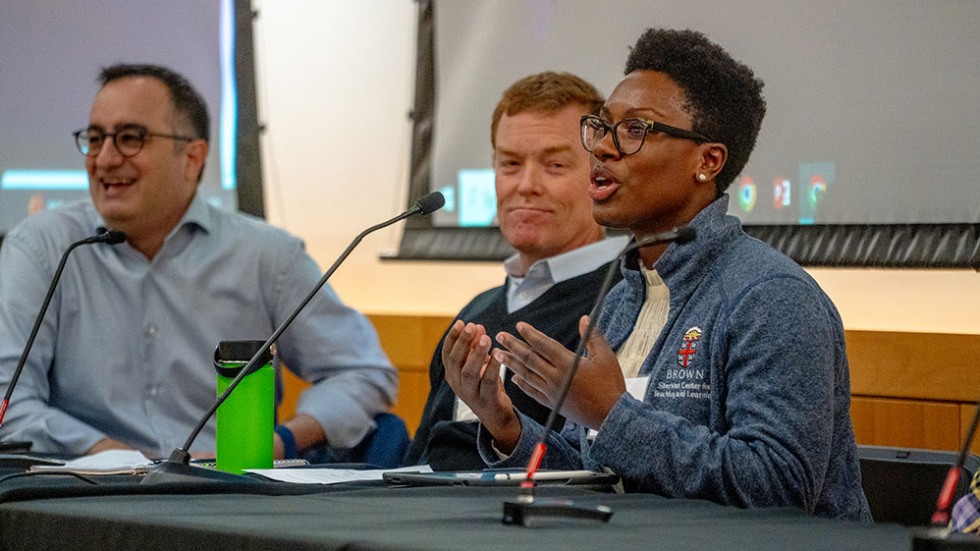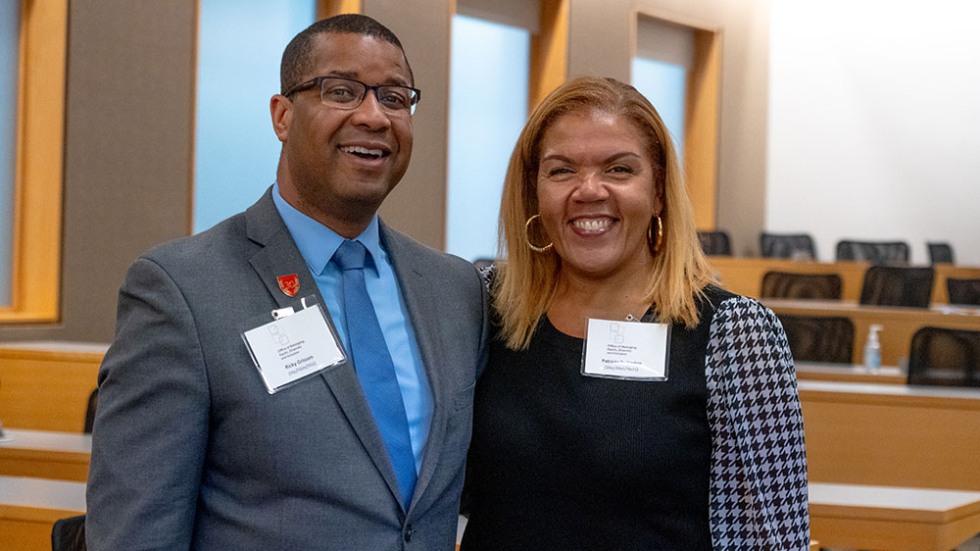Leaders from the National Academies of Sciences, Engineering, and Medicine (NASEM) and the Brown science community gathered at The Warren Alpert Medical School to focus on how to create a more inclusive and diverse environment for Brown and beyond, as part of the “Advancing Antiracism, Diversity, Equity, and Inclusion in STEMM Organizations: Beyond Broadening Participation” conference on Oct. 26.
The daylong conference was the culmination of more than six months of planning by a steering committee composed of representatives of STEMM fields (science, technology, engineering, math, and medicine) at Brown and chaired by Patricia Poitevien ’94 MD’98, MSc, senior associate dean for diversity, equity, and inclusion, in the Division of Biology and Medicine. Poitevien opened the day’s events and served as a panelist during a session on antiracist and DEI strategies for graduate students.
Poitevien said Brown has made "incredible strides in diversity, inclusion, equity, and belonging, across the STEMM continuum," due to the University's activist nature, the advocacy among students, faculty, and alums, the support from administrators, and the passion that many have for "inclusive excellence." She stressed, however, that there is still much work to be done, and the conference represented an opportunity to engage "honestly and humbly" with members of NASEM and the community.
"My hope, and I think our hope collectively, is to set a standard for STEMM institutions," she said. "We understand that the future of scientific inquiry and innovation depends on the work that we will embark upon today.”
Attendees included students, faculty, administration, alumni, and staff from across the University and a variety of divisions, including engineering, chemistry, physics and others. A trio of faculty-led panels discussed advancing anti-racism, diversity, equity, and inclusion for faculty, undergraduates, and graduate students, which also allowed questions and input from audience members.
Mukesh K. Jain, MD, senior vice president for health affairs and dean of medicine and biological sciences, said that Brown and other institutions have a responsibility as members of the community to remain invested to increase diversity and inclusion across these fields.
“We in the Division are focused on working on structural deconstruction that we believe will bring a conducive environment for lasting anti-racist change,” Jain said. He cited “robust efforts” to increase the number of young people in medicine through K-12 pathway initiatives like SMART-Plus and Week of Medicine, and the Brown Gateways to Medicine, Health Care, and Research master’s degree program.

